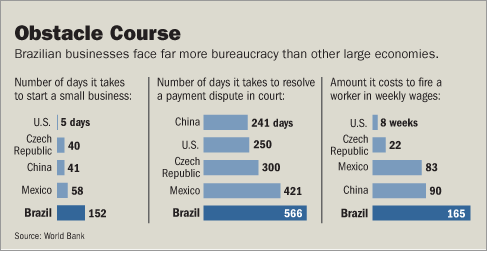Wednesday, May 25, 2005
Introductory econ lecture #3
I led today with the quote I ended with yesterday from Heyne's instructor's manual. We spoke both of demand and supply curves. I do mine a bit different as a result of Heyne's book, insofar as I like to tie the supply curve directly to the production possibility curve (in the principles courses we seldom have time for this.) Here's a nice interactive example of production possibilities, but it kind of poops out at the end. What do you do with it? Well, if you multiply the opportunity cost of producing units of a good -- in terms of the alternative production foregone -- by the price of the alternative good, you have the marginal opportunity cost. Plot them on a graph, like this, and you have a supply curve. Supply curves represent opportunity costs of production to producers.
There's a good example of opportunity costs in yesterday's WSJ -- heck, they even use the words in the title, o happy day! -- where the difficulty of setting up business in Brazil is killing economic growth there. This picture is worth a bit more than thousand words:

You can perform more analysis from the World Bank's Doing Business site. If you're an international investor, that picture tells you to send your money elsewhere. While the rest of the world is getting freer, Brazil is getting economically less free. It's also gone from the 8th to 14th largest economy in the world in the last ten years.
We spent a good deal of time talking about substitutes to discuss demand. We listed out all the different uses of water, and for each we identified a substitute. We also, following along with the text, challenged the use of the word "need". People crossing a street in front of onrushing traffic demonstrate that they do not place an infinite value on their lives. People take riskier jobs; they don't use seat belts; they don't check the smoke detector's batteries. Forensic economists are often used in tort cases to establish compensatory damages.
We played with the idea of opportunity costs as well looking at a couple of movie clips. In Family Man, Nicholas Cage wants to move his family to NYC so he can pursue what he says is his gift of arbitraging securities. Tea Leoni tells him how much it will cost the family. We had a good discussion listening to the end of the clip where Cage says "We can have the perfect life!" Leoni: "We already do." There's projection of one's value to others. To get across the power of thinking on the margin, we also played Mr. Creosote getting just one thin wafer. You might even call it a non-linearity.
Last, there's this question in the text which I love: "In order to decide whether or not to drop intercollegiate football, your school undertakes a student of the program's cost. To what extent do you think the following budget items represent genuine costs?
- Tuition scholarships to players.
- Payments on the stadium mortgage.
- Free tickets to all full-time students.
- Salaries of the atheletic director, ticket manager, and trainer.
This is not an idle question at SCSU, as some other NCC schools have gone Division I. When I talk to football boosters, they point to "not having enough scholarships", but ask yourself -- what is the cost to SCSU of giving a student who wouldn't come here otherwise a full scholarship on the day before school starts? What additional costs does the university bear?
I'm not arguing SCSU should go D1 -- I hope we would not -- but that the issues have more to do with building costs. We just built a stadium which is too small for D1. That's your binding constraint. It's not got to do with scholarships.









